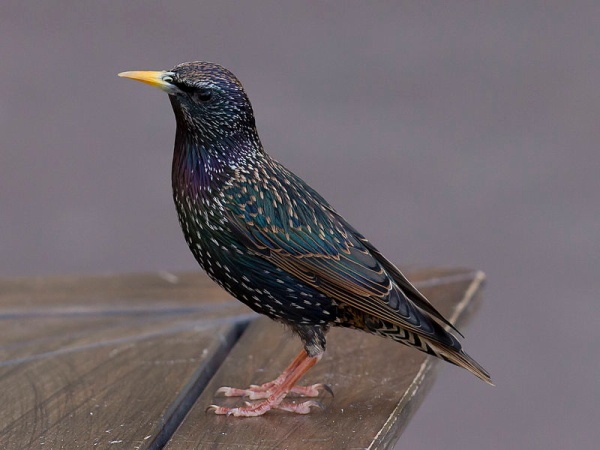This month the starling flocks will break up when the visitors head north and the locals begin to nest. In the meantime this informational tidbit may be useful in controlling their roosting habits … or it might not.
On a random search about starlings I found this statement on Wild Birds Unlimited’s Chipper Woods website: “Starlings have a well developed sense of taste, and are repelled by grape flavoring. Fogging with grape flavoring is an effective and environmentally safe method to discourage these birds from roosting.”
I know that starlings will eat just about anything, including grapes, so I wonder: What is grape flavoring made of? Do starlings detect something unnatural and dangerous in it that we cannot?
This starling, photographed in Toulouse, France, knows the answer. You can tell by his look that he has a well developed sense of taste.
(photo from Wikimedia Commons, Creative Commons license. Click on the image to see the original.)

If I recall correctly, the Common (European) Starling was brought to North America in the 19th century, so it isn’t native to this continent. But they’re one of my favorite local birds. They’re smart, vocal, and kind of pretty.
starlings do not like safflower seeds in the birdseed mix and they stay away.
thanks dick, the starlings are taking over again.